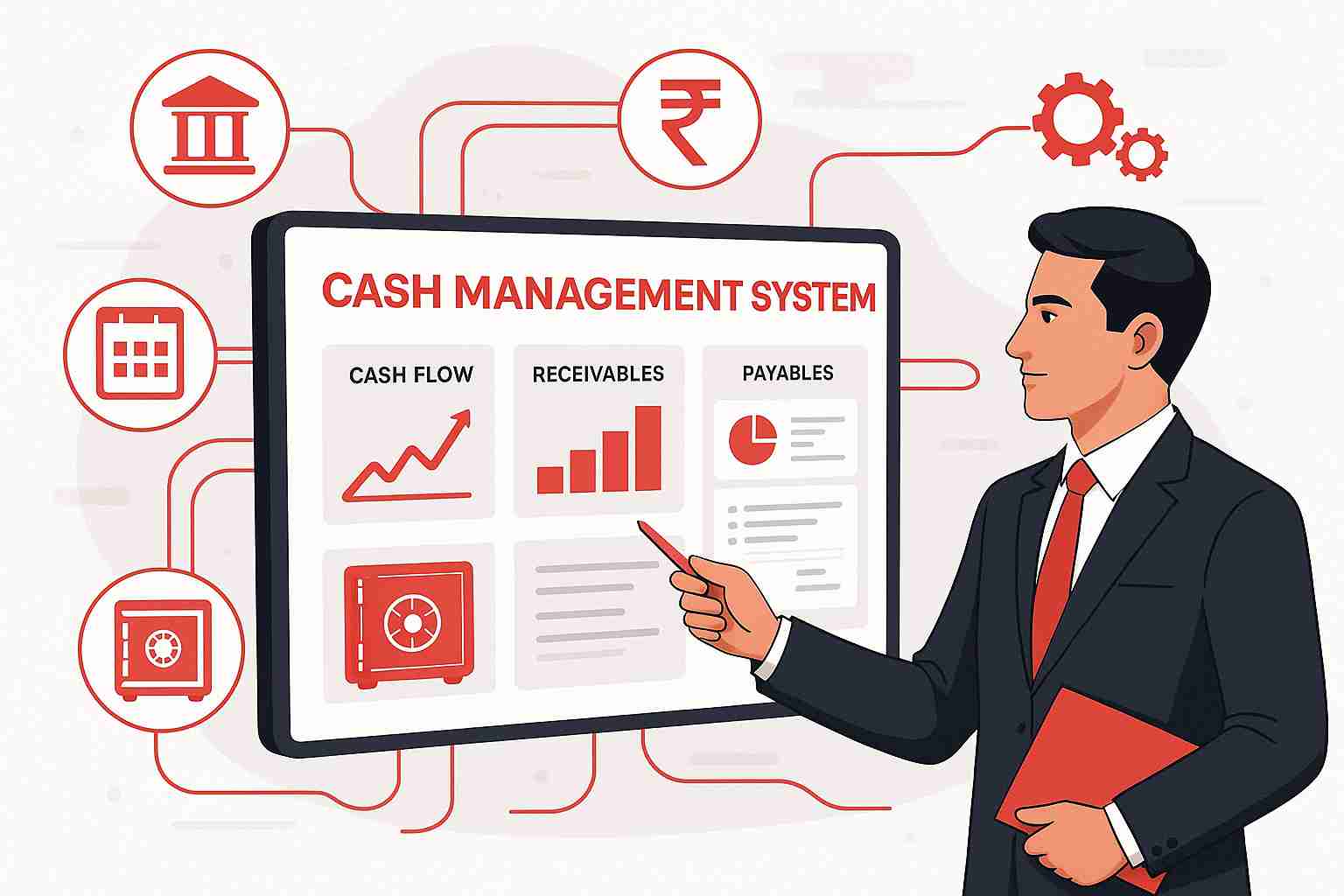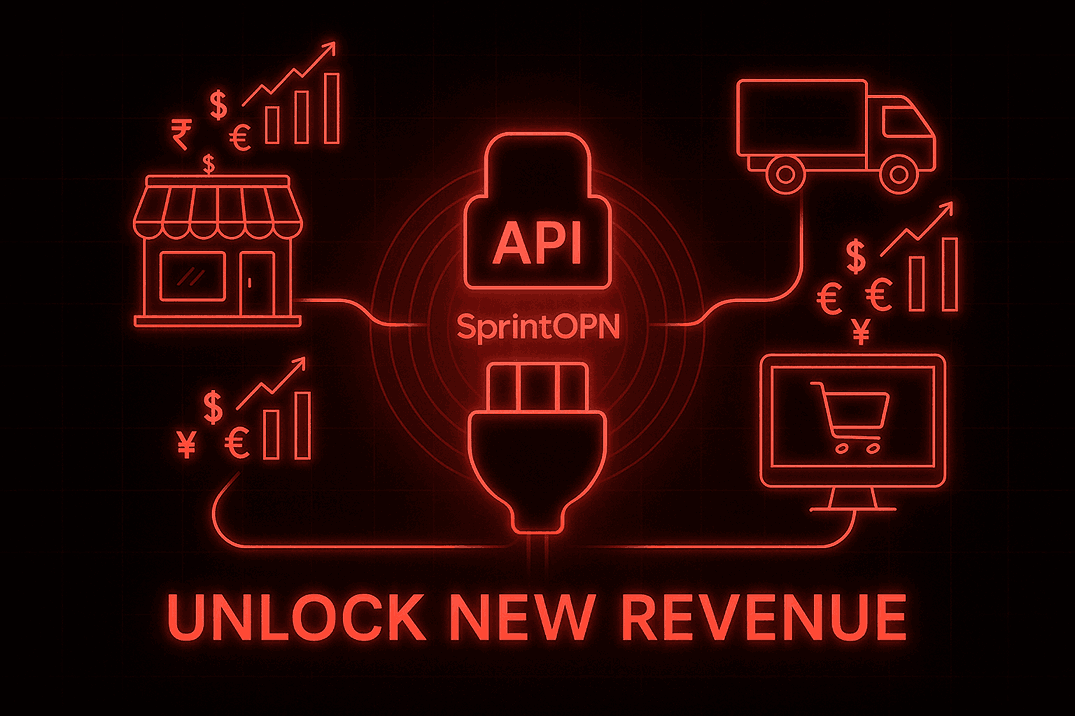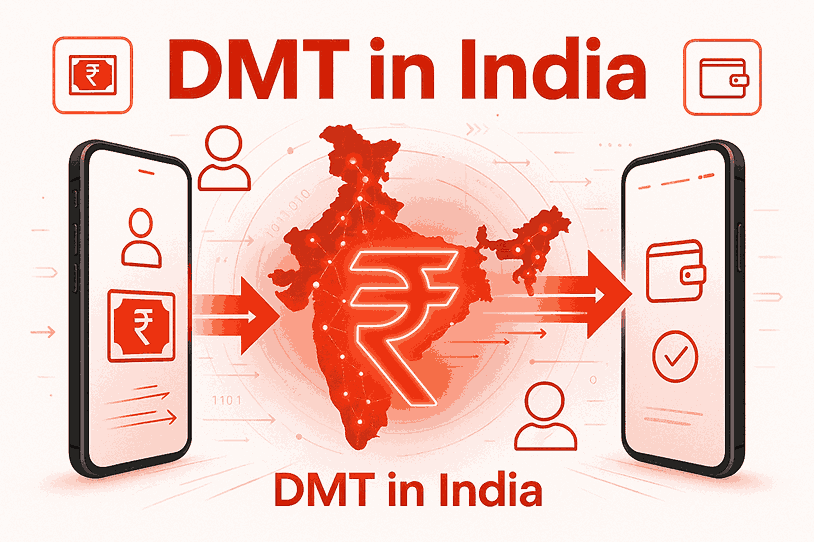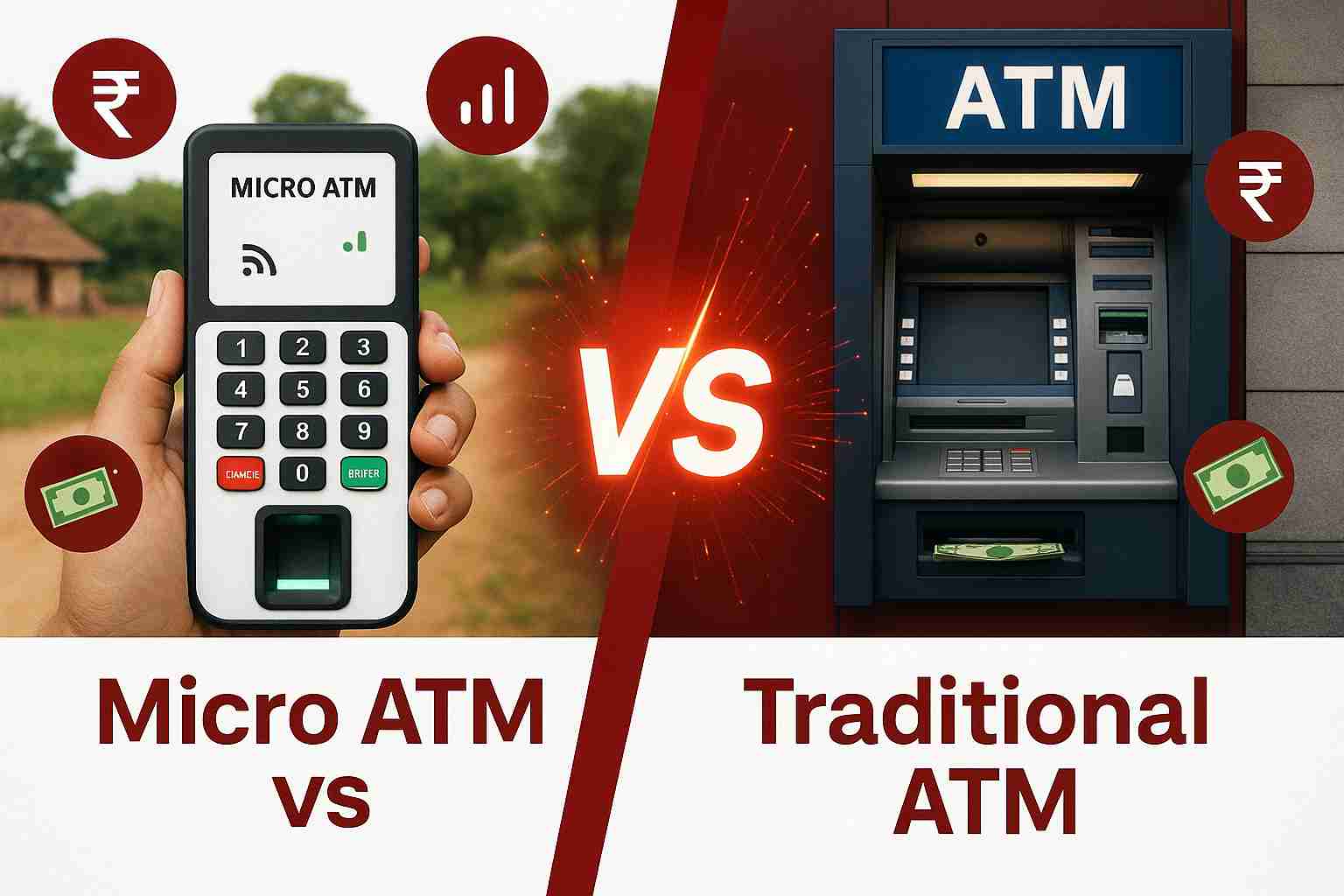A Complete Guide to Cash Management Systems: Types, Functions & Benefits

Cash
Management System (CMS) is a digital solution that helps businesses monitor, control, and
optimize their cash flow. It automates collections, disbursements, and
forecasting, reducing manual work and improving financial efficiency.
In this
blog, we’ll explore what CMS is, how it works, its types, and the benefits it
offers to modern businesses.
Table of Contents
1.
What
is a Cash Management System (CMS)?
2.
Why
Is Cash Management Important?
3.
How
Does a Cash Management System Work?
4.
Types
of Cash Management Systems
5.
Key
Features of a Good CMS
6.
Benefits
of Using a Cash Management System
7.
Who
Needs a CMS?
8. Final Thoughts
What is a Cash Management System (CMS)?
A Cash Management System is a software or digital platform that enables businesses to manage, monitor, and optimize their cash flow, collections, disbursements, and liquidity. It integrates seamlessly with banking channels, payment gateways, and ERP systems to provide complete visibility and control over a company’s cash operations.
Why Is Cash Management Important?
Effective
cash management is crucial for ensuring the financial stability and long-term
viability of a business. Poor cash control can lead to severe consequences.
Here’s why cash management is essential:
1.
Helps
prevent missed payments or delays in payroll.
2.
Reduces
the risk of poor or uninformed investment decisions.
3.
Avoids
excess idle cash or overdrafts that can hurt financial efficiency.
4. Lower borrowing costs through better fund planning.
5. Ensures timely vendor payments and improved supplier relationships.
How Does a Cash Management System Work?
A CMS
functions by automating the collection, disbursement, and analysis of a
business’s cash flow. The core working process involves:
1.
Cash Flow Monitoring: Tracks real-time inflow and outflow of funds across multiple accounts.
2.
Collections Management: Automates receivables tracking, reconciliation, and
follow-ups.
3.
Payments & Disbursements: Facilitates efficient payouts including vendor payments,
salaries, and bulk transactions.
4.
Liquidity Optimization: Suggests fund transfers, investment decisions, or
reallocation for improved cash utilization.
5. Reporting & Forecasting: Provides detailed financial reports and future cash flow forecasts for informed decision-making.
Types of Cash Management Systems
Different
types of CMS are tailored to fit varying business sizes and operational needs.
Here’s a breakdown of the three most common categories:
1.
Bank-Based CMS
Bank-based
Cash Management Systems are provided directly by commercial banks as part of
their corporate banking services. These systems are ideal for large
organizations with high transaction volumes that require seamless integration
with their primary banking partner. They offer strong reliability,
pre-configured banking workflows, and access to treasury tools, making them a
preferred choice for enterprises looking for stability and scalability in their
cash operations.
2.
Third-Party CMS Providers
Third-party
CMS solutions are developed by independent fintech companies or SaaS providers . These platforms are highly customizable, API-driven, and
designed to integrate easily with a company’s existing ERP or accounting
infrastructure. They provide greater flexibility, quick onboarding, and
scalability, making them especially useful for MSMEs, startups, and mid-sized
firms looking for tech-forward and cost-effective solutions.
3.
In-House Treasury Management Systems
Some large enterprises opt to build and manage their own in-house cash or treasury management systems. This option allows maximum control over features, workflows, and data management. In-house systems can be tailored to specific business models, but they require substantial IT resources, financial expertise, and ongoing maintenance. While they offer a high degree of customization, the cost and complexity involved may not be suitable for smaller businesses.
Key Features of a Good CMS
A
well-designed Cash Management System typically includes:
1.
Real-time
visibility into all business bank accounts.
2.
Automation
of collections and payment workflows.
3.
Bank
account aggregation under a single dashboard.
4.
Auto-reconciliation
of transactions and ledgers.
5.
User
role-based access and permission controls.
6.
Alerts,
notifications, and customizable dashboards.
7.
Predictive
analytics and intelligent cash forecasting.
8. API integration with ERPs, CRMs, and accounting platforms.
Benefits of Using a Cash Management System
Adopting a
CMS brings several operational and financial advantages:
1.
Reduces
manual work through automation.
2.
Enhances
cash flow forecasting and planning accuracy.
3.
Minimizes
idle cash and improves return on surplus funds.
4.
Strengthens
security with better fraud detection and access controls.
5.
Boosts
overall operational efficiency and financial transparency.
Who Needs a CMS?
A CMS is
beneficial for a wide range of businesses, regardless of their size:
1.
Small and Medium Enterprises (SMEs) managing multiple cash streams.
2.
Retail and franchise chains handling large daily cash collections.
3.
Logistics and courier services dealing with high-volume cash-on-delivery (COD) payments.
4.
Fintech companies facilitating third-party payments and collections.
5. Large enterprises with sophisticated treasury functions and multiple bank relationships.
Final Thoughts
With rising
business complexity and the push for digital transformation, a Cash Management
System is no longer just an option—it’s a necessity. From reducing cash
handling costs to enabling real-time insights, a CMS empowers businesses to
make smarter financial decisions with greater confidence.
If you’re looking to implement a secure, scalable, and real-time cash management solution, consider Cash Management API. It helps businesses automate collections, streamline disbursements, and gain real-time visibility into their cash position.
Frequently Asked Questions (FAQs)
What is the purpose of a Cash Management System?
A Cash
Management System is designed to help businesses track, manage, and optimize
their cash flow. It automates key processes, such as collections, disbursements, and liquidity monitoring, to enhance financial efficiency and informed decision-making.
Is a CMS suitable for small businesses?
Yes, small
and medium-sized businesses (SMBs) can greatly benefit from using a CMS. It
helps them maintain healthy cash flow, reduce manual work, avoid delays in
payments or collections, and make informed financial decisions.
What are the key features to look for in a CMS?
Essential
features of a CMS include real-time cash tracking, automated collections and
payments, integration with accounting/ERP systems, auto-reconciliation,
role-based access, and robust reporting and forecasting tools.
How does a CMS differ from accounting software?
While
accounting software focuses on recording financial transactions and generating
financial reports, a CMS specializes in managing cash flow and liquidity in
real-time. A CMS often works in conjunction with accounting tools to optimize cash flow.
Can a CMS integrate with multiple banks and ERPs?
Yes, modern
CMS platforms—especially API-enabled ones like CMS—are built to
integrate seamlessly with multiple banks, payment gateways, and enterprise
systems. This allows businesses to centralize and streamline financial
operations.




